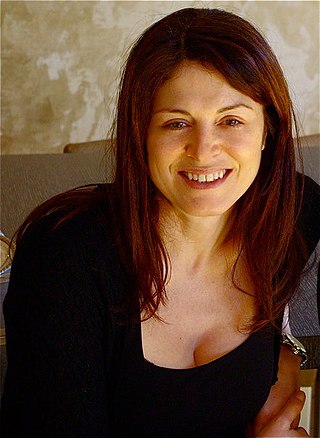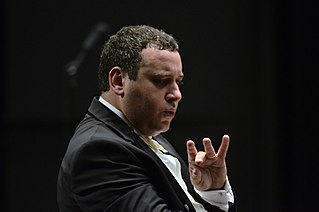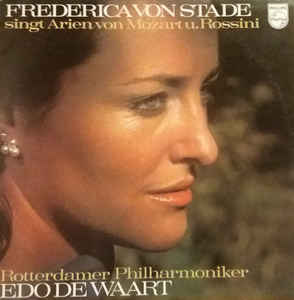
Gioachino Antonio Rossini was an Italian composer who gained fame for his 39 operas, although he also wrote many songs, some chamber music and piano pieces and some sacred music. He set new standards for both comic and serious opera before retiring from large-scale composition while still in his thirties, at the height of his popularity.

The Barber of Seville, or The Useless Precaution is an opera buffa in two acts composed by Gioachino Rossini with an Italian libretto by Cesare Sterbini. The libretto was based on Pierre Beaumarchais's French comedy The Barber of Seville (1775). The première of Rossini's opera took place on 20 February 1816 at the Teatro Argentina, Rome, with designs by Angelo Toselli.

Giovanni Paisiello was an Italian composer of the Classical era, and was the most popular opera composer of the late 1700s. His operatic style influenced Mozart and Rossini.

Pierre-Augustin Caron de Beaumarchais was a French polymath. At various times in his life, he was a watchmaker, inventor, playwright, musician, diplomat, spy, publisher, horticulturist, arms dealer, satirist, financier and revolutionary.
This is a list of music-related events in 1816.

Gianluigi Gelmetti OMRI, was an Italian-Monégasque conductor and composer.

Mario Petri was an Italian operatic bass-baritone particularly associated with Mozart and Rossini roles.
Ernesto Badini was an Italian opera singer that sang in the baritone range. He was trained at Milan Conservatory and made his debut as Matteo at Lodi's Teatro Gaffurio in 1896. Badini was a regular performer at Milan's La Scala and achieved his greatest success in the comic role of Puccini's Gianni Schicchi.

Anna Caterina Antonacci is an Italian soprano known for roles in the bel canto and Baroque repertories. She performed as a mezzo-soprano for several years, particularly performing the Rossini canon.
Géraldine Chauvet is a French operatic mezzo-soprano.

Juan Francisco Gatell (born November 28, 1978, in La Plata, Argentina Juan Francisco Gatell is an Argentinian operatic tenor who specialises in the bel canto repertoire.

Antonino Fogliani is an Italian conductor.
Luca Canonici is an Italian opera singer who has had an active career singing leading tenor roles both in Europe and his native Italy.
Nunù Sanchioni was an Italian operatic singer. She was considered one of the finest coloratura sopranos of her generation and was often compared with Mercedes Capsir and Toti Dal Monte. Her best roles included Rosina in Gioachino Rossini's Il barbiere di Siviglia and Gilda in Giuseppe Verdi's Rigoletto.
Michele Mariotti, born in 1979 in Urbino, near Pesaro, is an Italian conductor, the direttore musicale since 2014 of Teatro Comunale di Bologna. A graduate in composition of Pesaro's Conservatorio Rossini, where he also studied orchestral conducting, he made his professional opera debut with Il barbiere di Siviglia in Salerno on Oct. 12, 2005. As of April 2017, his repertory included nine Rossini and eight Verdi operas, an extraordinary achievement, as well as symphonies of Beethoven, Bruckner and Schubert, the Rossini Stabat mater, the Mozart Requiem and the Verdi Requiem.
Svetlina Stoyanova is a Bulgarian operatic mezzo-soprano.
Jolanta Omilian, real name: Jolanta Omiljanowicz-Quattrini, is a Polish opera singer, singing mainly belcanto and dramatic soprano parts.

Frederica von Stade sings Mozart & Rossini Arias is a 52-minute studio album of operatic arias performed by von Stade and the Rotterdam Philharmonic Orchestra under the direction of Edo de Waart. It was released in 1976. A second, 69-minute version of the album, Frederica von Stade: Haydn, Mozart & Rossini Arias, released by Philips on CD, adds bonus tracks derived from von Stade's contributions to Antal Doráti's recordings of Joseph Haydn's operas La fedeltà premiata and Il mondo della luna. A third, 52-minute version released on SACD by PentaTone in 2005 reverts to the contents of the first version, but presents the music in quadraphonic surround sound.
Silvia Tro Santafé is a Spanish lyric-coloratura mezzo-soprano. In her early career she was best known for her interpretations of Handel and became notable for her performances of Rossini, Bellini, Donizetti, and in recent years Verdi.

Jolanda Meneguzzer was an Italian lyric soprano who made regular appearances at leading opera houses in the 1960s.











